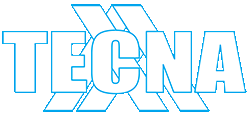
The Evolution of Crypto Trading Framework
In the fast-paced world of cryptocurrency trading, establishing a solid Crypto Trading Framework http://del.gr/component/k2/item/23/23?start=40 is essential for both novice and seasoned traders alike. This framework provides a structured approach to navigate the complexities of trading different cryptocurrencies while managing risks effectively. The foundation of any successful trading strategy hinges on a robust frame of reference that includes market analysis, risk management, and a well-defined trading plan. As we delve into the intricacies of the Crypto Trading Framework, we will cover various elements that contribute to shaping a trader’s success.
Understanding Market Trends
One of the first steps in creating an effective Crypto Trading Framework is understanding market trends. Traders should develop a keen ability to analyze price movements over different time frames. This can be achieved through both fundamental and technical analysis. Fundamental analysis involves examining the broader economic indicators impacting cryptocurrency markets, while technical analysis focuses on price charts and patterns. By combining these approaches, traders can gain insights into potential future price trajectories.
Technical Indicators
Within the realm of technical analysis, various indicators play crucial roles. Popular tools include Moving Averages (MA), Relative Strength Index (RSI), and Bollinger Bands. These indicators help traders make informed decisions by identifying entry and exit points. For instance, a crossover of short-term and long-term moving averages might signal a potential buying opportunity. Similarly, RSI can indicate overbought or oversold conditions, providing traders critical information to time their trades effectively.
Risk Management Strategies
While understanding market trends is vital, it is equally important to emphasize risk management within the Crypto Trading Framework. Risk management refers to the strategies implemented to minimize losses while maximizing gains. Successful traders often adopt the rule of never risking more than 1% of their trading capital on a single trade. This principle ensures that a series of losses will not severely impact the trader’s overall capital, allowing them to recover and continue trading without financial distress.

Diversification
Diversifying one’s cryptocurrency portfolio is another key risk management strategy. By investing in a mix of established cryptocurrencies like Bitcoin and Ethereum along with emerging altcoins, traders can reduce their exposure to any single asset’s volatility. This approach mitigates overall risk while providing the opportunity to capture gains from various sectors within the crypto market.
Developing a Trading Plan
Having a comprehensive trading plan is a fundamental component of the Crypto Trading Framework. A trading plan outlines the trader’s objectives, strategies, risk tolerance, and methods for evaluating performance. Establishing clear goals, whether short-term or long-term, helps maintain focus amid the inherent volatility of the cryptocurrency market.
Psychological Aspects of Trading
Moreover, psychology plays a significant role in trading success. Traders must cultivate emotional discipline to stick to their trading plans. Fear and greed can lead to impulsive decisions that deviate from one’s established strategy. Keeping a trading journal to reflect on past trades can enhance self-awareness and contribute to personal development as a trader.
Using Technology in Crypto Trading
The integration of technology in trading has revolutionized the way traders approach the cryptocurrency market. Tools such as automated trading bots, signaling platforms, and portfolio management applications can significantly enhance a trader’s efficiency. These tools can execute trades based on predefined criteria, monitor market sentiment through social media analytics, and provide real-time updates on portfolio performance.

Blockchain Analytics
Blockchain analytics is another emerging field that offers traders unique data insights. By analyzing transaction volumes and patterns on different networks, traders can glean valuable information about market behaviors and potential investor interest. This data-driven approach enhances decision-making processes and improves trading outcomes.
Staying Informed: Education and Community
Continuous education and engagement within the trading community are essential for staying informed about market developments. Joining forums, attending webinars, and participating in local meetups can provide invaluable knowledge sharing opportunities. Furthermore, following industry news through reputable sources can keep traders updated on regulations, market shifts, and technological advancements that may impact trading strategies.
Building a Support Network
Having a support network of like-minded traders can foster collaboration and mentorship, further enriching one’s trading experience. Sharing insights and experiences with peers can lead to new strategies and different perspectives that may enhance individual approaches to trading.
Final Thoughts on Crypto Trading Framework
The world of cryptocurrency trading is both exhilarating and daunting. Adopting a well-defined Crypto Trading Framework can effectively manage this duality by providing structure and strategic direction to trading efforts. By integrating market analysis, risk management, technological tools, and continuous education, traders can build resilient trading strategies that adapt to the ever-evolving marketplace.
In conclusion, focusing on the core components outlined in this article will greatly benefit traders at all stages. The key to success lies in the systematic approach embraced within the Crypto Trading Framework, which empowers traders to navigate the complexities of the cryptocurrency landscape confidently.
